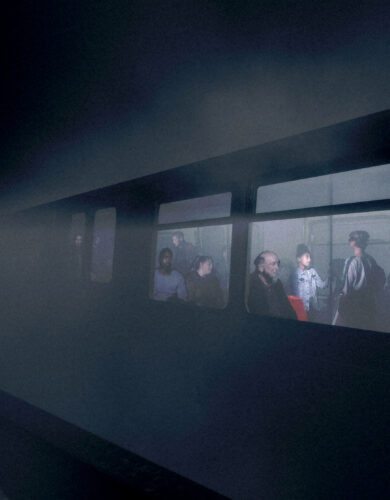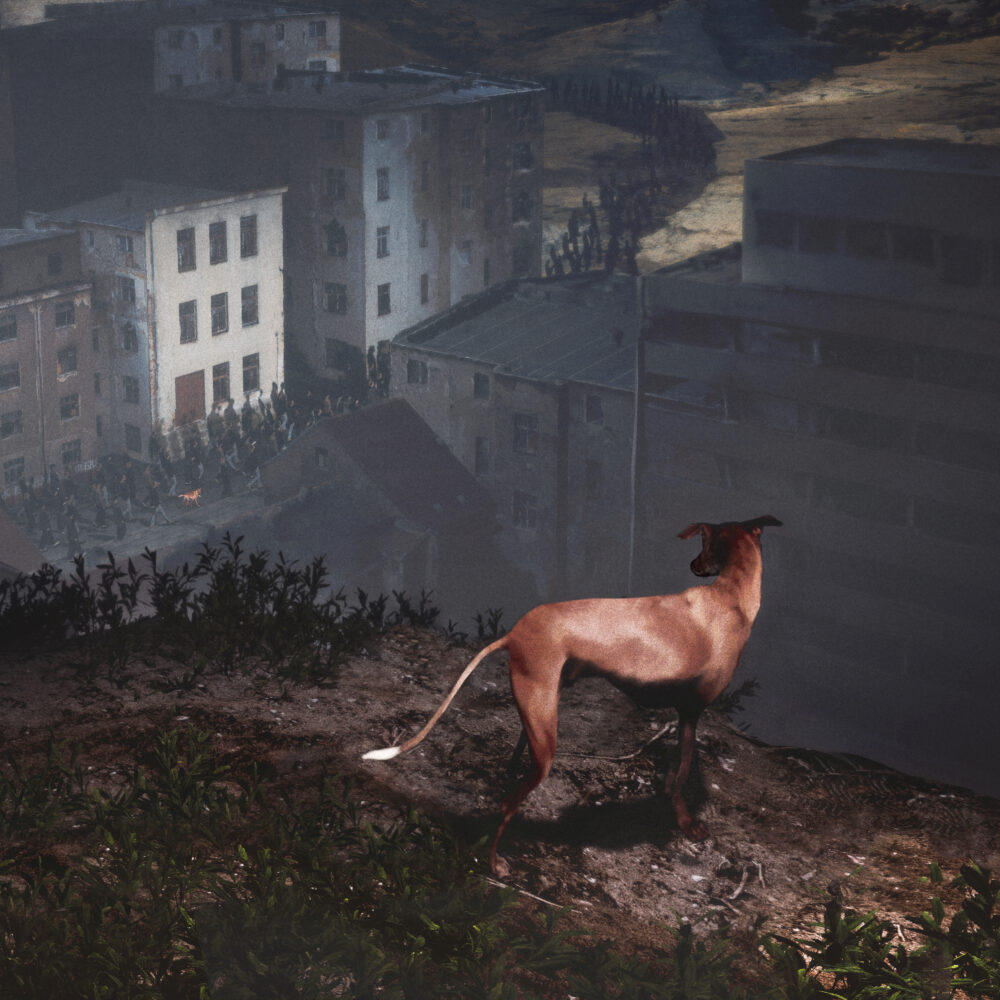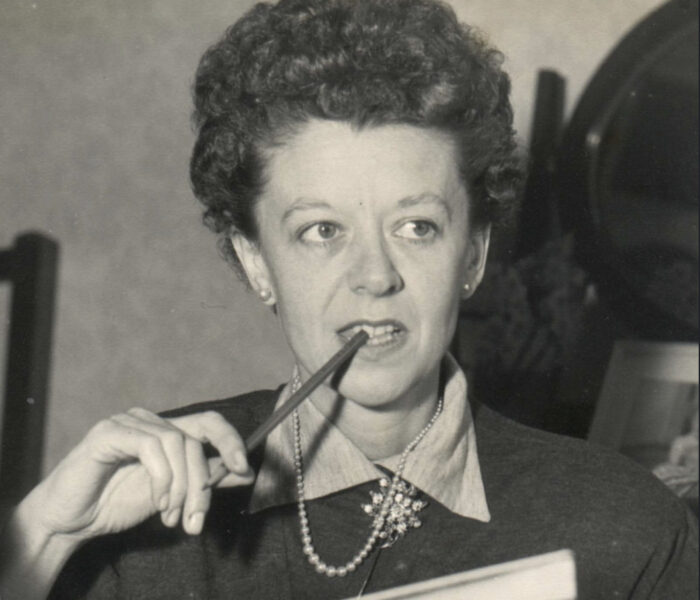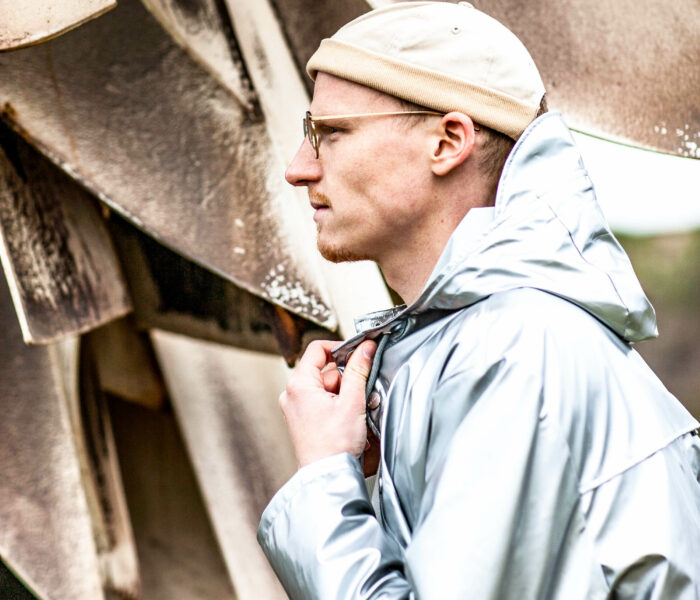In the field of art and virtual reality, Celine Daemen (b. 1995) has made a name for herself as a visionary filmmaker and creator. Her unique blend of technology, music and storytelling pushes the boundaries of traditional art forms. From virtual reality operas to immersive video installations, Daemen's work transcends the physical realm, inviting viewers to explore new dimensions of emotion and experience.
Celine Daemen What training have you had and how does one become a virtual reality virtuoso like you are?
Haha thank you. I studied the directing course of the Academy of Performative Arts in Maastricht which shaped the way I look at the medium. I think if you see my VR pieces you can feel, in my way of thinking about the presence of the spectator in the here and now, that it builds some how on top of theater history and the way that music relates to the audience. The last one is something very immersive- it makes the audience experience themselves. I am not interested in very narrative driven work, but more interested in atmospherical and musical dramaturgies. That to me is inspiring when I think about immersive media.



Songs for a Passerby was distinguished at the Venice Biennale, where you have just been awarded the Venice Immersive 2023 Grand Prize: what exactly does the work of a director in such a project consist of and who are your collaborators in this company?
I worked together with a core team of my art director Aron Fels, sound and music composer Asa Horvitz, and librettist Olivier Herter. They were all very involved in the creational process. Sharing our ideas in a very early stage, involving each other in our creative processes, in brainstorms, and working sessions. I think in transdisciplinary working that is very important. This way all their disciplines get tangled into one beautiful whole, in which you, when you experience all this, can not separate the disciplines anymore. The role of the director here is to make everything come together and make sure that all my core team members move in the right direction. I try to inspire them and invite them to share their ideas and make them work together intimately. Inspired by their ideas I try to come up with a concept that brings everything together in immersive and haunting atmospheres and fitting to what I (and they themselves) want to express in the piece.
Teaser Nowhere from Studio Nergens /by Celine Daemen on Vimeo.
You say there's no real story in Songs for a Passerby: how would you summarize the libretto you worked on by Olivier Herter?
The text/booklet is not leading in the piece. It is the sounds and the images that guide the audience through it. To give you an idea: the audience makes a journey through scenes of a dreamscape, a city that they discover by foot, guided by a dog leading the way, and on the way they meet several streets with people passing them by, they pass by a dying horse, people sitting in a metro, who's mantra like thoughts you can listen to and they meet their own mirror image: they see there own body, live recorded, walking through those scenes. They reach a big vista, a certain overview, where they look back on some of the scenes that they have experienced before from a distance. In these scènes you also see yourself from a great distance: they look at themselves looking, touching a lonely or melancholic feeling.
The texts Olivier has written, that they meet along the way, are haunting mantra like thought patterns of the characters that you pass by. In the metro, for the example, you can hear the thoughts of the people that you pass by. They are existential, intimate mumblings.
In Songs for a Passerby, the user-spectator becomes the protagonist and can explore the city at their own pace, interacting with the environment and the characters. How do you achieve this?
There is not a lot of interaction actually. At least, not something that meets the eye. I think the piece in general addresses very much the feeling of not having the agency to interact. You walk through the scenes and feel like you can not change anything about the situation. Passing by this dying horse and not being able to help it is a very haunting feeling, using spectatorship as an artistic element to reflect upon. It is a voyeuristic approach to the medium. Technically, behind the scenes, of course, there are a lot of small technical interactions, dogs appearing at the exact right moment for example, or roaming through the spaces and discovering new scenes on the same floor surface. This is all mostly based on the audience's viewing direction and position of them in the physical space. The audience walks around in circles and by that we are able to change the environment all the time, making them feel like they are on a big journey, moving from scene to scene, refreshing the environments that lie in front of them. As stated before they meet their own mirror image in the scenes: for that, we use live 3D cameras.



How much of the music is by Asa Horvitz? Is the text sung in its entirety, as in a traditional opera?
Not all the text is sung. It is a much more contemporary approach. Like it’s a musical and sonical landscape that you can explore. There is not really a division between sound and music. All the sounds are used as musical elements. For example, the breath of the dying horse or the whispered thoughts of the people in the metro, are not sung, but they are approached musically or rhythmically. Next to that there are some haunting melodies in some parts of the piece. All are composed by Asa, from horse breath to melodies. Some melodies are echoes from existing songs.
In your note of intent, you speak of an experience touching on a recognizable feeling of melancholy, and you choose as your exergue an elegy by Rilke: " This is what fate means: to be opposite, and to be that and nothing else, opposite, forever. "
This is a recurring theme in all your work... Does it reflect a sombre, even pessimistic vision of the world?
Not at all. The word melancholy in Dutch has a different connotation than the English word. There is a certain beauty in this feeling. The piece touches on a lonely or sad feeling of life passing you by, but also a strong desire for being one with the world. I think the work is a spiritual journey reflecting on this feeling of melancholy, feeling outside of the world, looking at yourself seeing life passing you by, but we conclude the piece with a confrontation with your mirror image close by and two playing dogs at your feet. That to me is an image of joy and being in the here and now.
Interview by Michèle Tosi
Back to Songs for a Passerby at the Muziekgebouw in Amsterdam until September 30 ( Silbersee production, coproduction Studio Nergens, Via Zuid, Muziekgebouw Productiehuis)
With the support of Performing Arts Fund (NL)
Photos © Celine Daemen
Photos © Aron Fels



)



